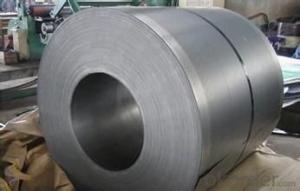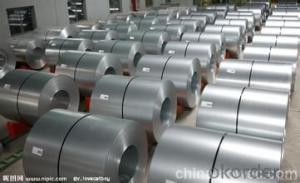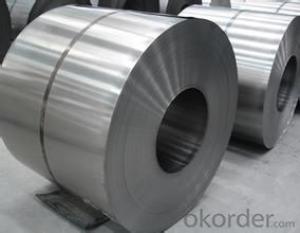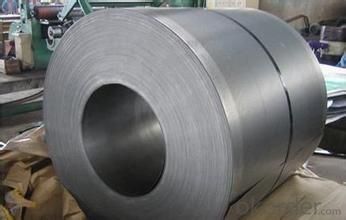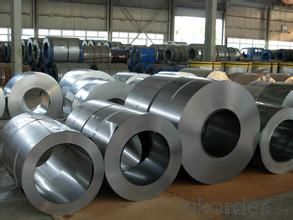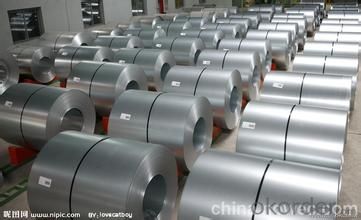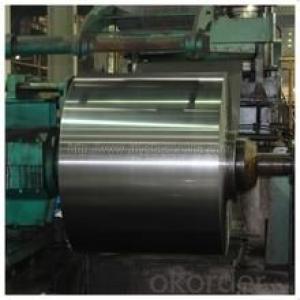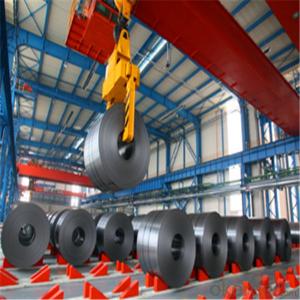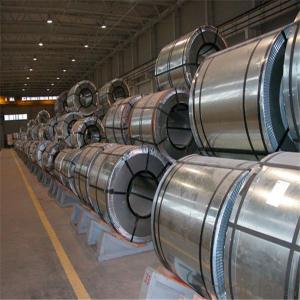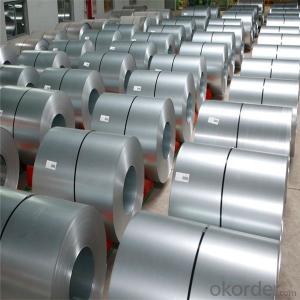excellent cold rolled steel coil / sheet -SPCE in China
- Loading Port:
- Tianjin
- Payment Terms:
- TT OR LC
- Min Order Qty:
- 100 m.t.
- Supply Capability:
- 5000000 m.t./month
OKorder Service Pledge
OKorder Financial Service
You Might Also Like
Specification:
Thickness: 0.4-2.0mm
2. Width: 900-1250mm
3. Inner Diameter: 508mm
4. Weight of Steel Coil: 3-15MT
5. Heat Treatment: Annealed
6. Margin Status: EC & EM
7. Surface Quality: FB&FC
8. Surface Status: SB & SD
9. Surface Treatment: Oiling
Main Features:
1. Commercial quality suitable for bending fabrication and simple forming; this is the type in greatest demand.
2. Drawing quality second only to that of SPCEN. Excellent uniformity.
3. Deep-drawing quality.With metallurgically controlled grain size, it retains its beautiful finish even after being deep-drawn.
4. Extra-low-carbon steel sheets with highest workability
Application:
1. Refrigerators, cabinets, power distribution baords and drums.
2. Automobile floor and roof panels.
3. Automobile fenders and quarter panels
4. Automobile fenders and quarter panels
Images:
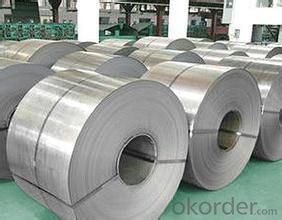
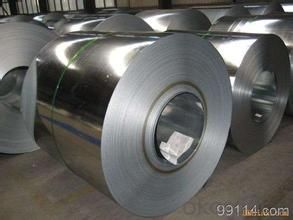
Quality of the goods could be guaranteed. The finished product has a variety of excellent capabilities, such as continuous rolling, degreasing, annealing, skin pass, slitting and cut to length line etc. Along with it many rocessing capability and smooth, flat surface. It’s widely used in outdoor and interior decoration, furnishing
- Q: What are the common coil loading and unloading procedures?
- The common coil loading and unloading procedures typically involve the use of specialized equipment such as cranes or forklifts to safely lift and transport the coils. The procedure may vary depending on factors such as the size and weight of the coils, as well as the specific requirements of the industry. Generally, the coils are loaded or unloaded by carefully positioning them onto or off of a designated storage area or transportation vehicle. The process often includes securing the coils with straps or clamps to prevent any movement or damage during transportation. Proper handling and adherence to safety protocols are crucial to ensure the successful loading and unloading of coils.
- Q: I've seen commuters that ride fixed gear and the traditional pista bike with gears. Now, as I saw on the bianchi website that you can mount front and rear brakes on the bianchi steel pista bike and I want to use it to ride to water polo and school.I've rode the ghetto fixed gear bike but it has gotten small for me. It was an aluminum bike. How strong is the steel? Is the frame strong enough to handle 150 lbs? Will the fork break easily if I ride over some cracks? Has anyone ridden the bianchi steel bike and the fork broke? HELP?Thanks.P.S. Please don't comment how I shouldn't use a pista bike on the road, if I can mount brakes then it can be used for road purposes.
- Bianchi Steel Bike
- Q: Is Carbon Steel strong for swords?
- Depends on the sword design. Some swords are high carbon, some a low carbon, some are made from a billet of alternating high and low carbon ('Damascus' steels). It all depends on what characteristics you want for your sword. Softer steels won't hold an edge as well but they offer great flexibility so your sword won't shatter when they make impact with armor or shields. Harder steels hold better edges but they're prone to binding in wooden shields and then being broken as soon as a bending force is applied along the weak axis of the blade. Japanese Katanas have both hard and soft steels to allow the blade to bend yet still hold strong edges. If you're making the sword from raw materials on your own, look up some different recipes for crucible steel. It's probably the most fun and involved process.
- Q: How do steel coils contribute to the manufacturing of construction materials?
- The manufacturing of construction materials heavily relies on steel coils, as they serve as a flexible and dependable source of raw material. These coils, made from top-notch steel, are commonly used as a primary input in diverse construction processes. One of the key advantages of steel coils in construction material manufacturing lies in their adaptability to be shaped and formed into different products. These coils can be easily cut, bent, and molded, enabling the creation of a wide array of construction materials such as beams, pipes, and sheets. This flexibility empowers manufacturers to produce tailor-made construction components that fulfill specific project requirements. Moreover, steel coils provide construction materials with strength and durability. Steel is renowned for its exceptional tensile strength, making it an ideal choice for load-bearing structures and components. By employing steel coils, manufacturers can fabricate construction materials capable of withstanding heavy loads, extreme weather conditions, and other environmental factors, ensuring the longevity and safety of the final construction product. Additionally, steel coils offer consistency in both quality and performance. The manufacturing process of steel coils adheres to rigorous quality control measures, guaranteeing that the final product meets the necessary specifications. This uniformity in quality instills construction material manufacturers with the confidence to consistently produce reliable and high-performance products. Steel coils also play a role in enhancing the efficiency of construction material manufacturing. The availability of steel coils in large quantities and standardized dimensions allows for streamlined production processes. Manufacturers can optimize their operations by utilizing automated machinery and processes, reducing production time and costs, and increasing overall efficiency. In conclusion, steel coils are an indispensable component in the manufacturing of construction materials. Their versatility, strength, consistency, and efficiency make them the preferred choice for construction material manufacturers. By utilizing steel coils, manufacturers can create construction materials of superior quality and reliability, contributing to the safety, durability, and aesthetics of various construction projects.
- Q: How do steel coils perform in high-pressure applications?
- Steel coils perform well in high-pressure applications due to their inherent strength and durability. The high tensile strength of steel allows it to withstand the intense pressure without deformation or failure. Additionally, steel coils can be manufactured to precise specifications, ensuring they can handle the specific pressure requirements of the application. Overall, steel coils are a reliable and efficient choice for high-pressure applications.
- Q: I juuuust got a new stainless steel sink only 5 months ago, and it already has a couple rust spots on it.What caused this?!
- This is usually surface rust caused from other non-stainless objects coming in contact with the sink. It is a stain, more than actual rusting of the sink. Barkeepers Friend works well for cleaning stainless steel. Find it in the cleaning aisle of most larger stores.
- Q: I want to know where cold formed steel framing is used, is every steel frame we see in a construction sites like houses, building and bridges cold formed steel frames? or hot formed steel framing?I also read that cold formed steel framing is used for floors, is the steel frame beneath the floor's concrete cover?Thank u very much!!
- Abeer: I'm a civil/structural engineer. Cold-formed (or rolled) steel framing is typically limited to facades, studs in lightly-loaded bearing walls and non-load bearing wall studs. Hot-rolled steel members are typically used to frame steel buildings and bridges. See the article below on cold-formed steel framing.
- Q: What are the challenges in coil edge trimming for narrow strips?
- Coil edge trimming for narrow strips presents several challenges. Firstly, a major hurdle lies in maintaining accuracy and precision throughout the trimming process. It is imperative to achieve an even and smooth trim on narrow strips, requiring a high level of precision. Any deviation from this precision can result in uneven edges or burrs, which ultimately impact the strip's overall quality. Secondly, controlling strip tension poses another challenge. Due to their limited surface area, narrow strips are more susceptible to tension issues. This can lead to problems such as strip breakage or stretching, ultimately affecting the final product's quality. Furthermore, avoiding material waste is a crucial challenge. Narrow strips allow for less margin of error, meaning any mistakes during trimming can result in a significant amount of wasted material. Minimizing material waste is essential for cost-effectiveness and sustainable manufacturing practices. Moreover, maintaining a high production rate can be difficult with narrow strips. The trimming equipment must handle the high speed required for efficient production while still maintaining accuracy and precision. This necessitates the utilization of advanced machinery and technology to ensure smooth and efficient operations. Lastly, the handling and transportation of narrow strips also present challenges. Due to their small size, narrow strips are more prone to damage during handling and transportation. Implementing proper care and handling techniques is vital to prevent any potential damage that could compromise the final product's quality. In conclusion, the challenges in coil edge trimming for narrow strips revolve around precision, tension control, material waste, production rate, and handling. Overcoming these challenges necessitates the use of advanced technology, skilled operators, and meticulous attention to detail throughout the entire process.
- Q: What is the role of steel coils in the electrical industry?
- The electrical industry greatly relies on steel coils due to their versatile applications and significant contributions. Transformers, which play a crucial role in power distribution and voltage regulation, utilize steel coils as essential components. These coils facilitate the transfer of electrical energy between circuits, enabling efficient transmission over long distances. Moreover, electric motors and generators heavily rely on steel coils. These coils are wound around the stator and rotor, creating magnetic fields that facilitate the conversion of electrical energy into mechanical energy and vice versa. This conversion process holds immense importance in industries such as automotive, manufacturing, and renewable energy. Steel coils also serve a vital purpose in the production of electrical cables and wiring. They provide strength, durability, and protection to the conductive copper or aluminum wires within the cables, ensuring their structural integrity. This, in turn, guarantees safe and efficient electricity transmission. Additionally, steel coils find application in electrical equipment like solenoids and relays. Their presence enables the creation of magnetic fields that control the flow of electrical current. Furthermore, various electrical appliances, including refrigerators, air conditioners, and televisions, rely on steel coils as crucial components for their proper functioning. In conclusion, the role of steel coils in the electrical industry cannot be overstated. From transformers to motors, generators, cables, and electrical equipment, these coils contribute significantly to the efficient distribution, conversion, and transmission of electrical energy.
- Q: how do i quinch steel? i heard instead of water oil will actually make it harder... wat ways are best for wat steels? and how do i tell wat kind of steel i have?... i will be doin this with my poket knife..
- boy what a though question ! let me explain. when you rapidly cool a steel from high temperatures(depending on steel type) with water or oil or other means , it is called quenching. it depends on the steel type to say if it is better to quench it with oil or water but basically in water you will have a harder steel rather than oil. for some steels if you do this you will ruin it's properties ! you can't totally tell what kind of steel do you have until you get it analyzed with Quantometer analyzer with a pocket knife it is more like an estimation and it can't be trust able generally if you can scratch the steel with your knife it means it is not a hard steel and it might not be expensive. I hope that helps but for more information i need to know more !
Send your message to us
excellent cold rolled steel coil / sheet -SPCE in China
- Loading Port:
- Tianjin
- Payment Terms:
- TT OR LC
- Min Order Qty:
- 100 m.t.
- Supply Capability:
- 5000000 m.t./month
OKorder Service Pledge
OKorder Financial Service
Similar products
Hot products
Hot Searches
Related keywords
